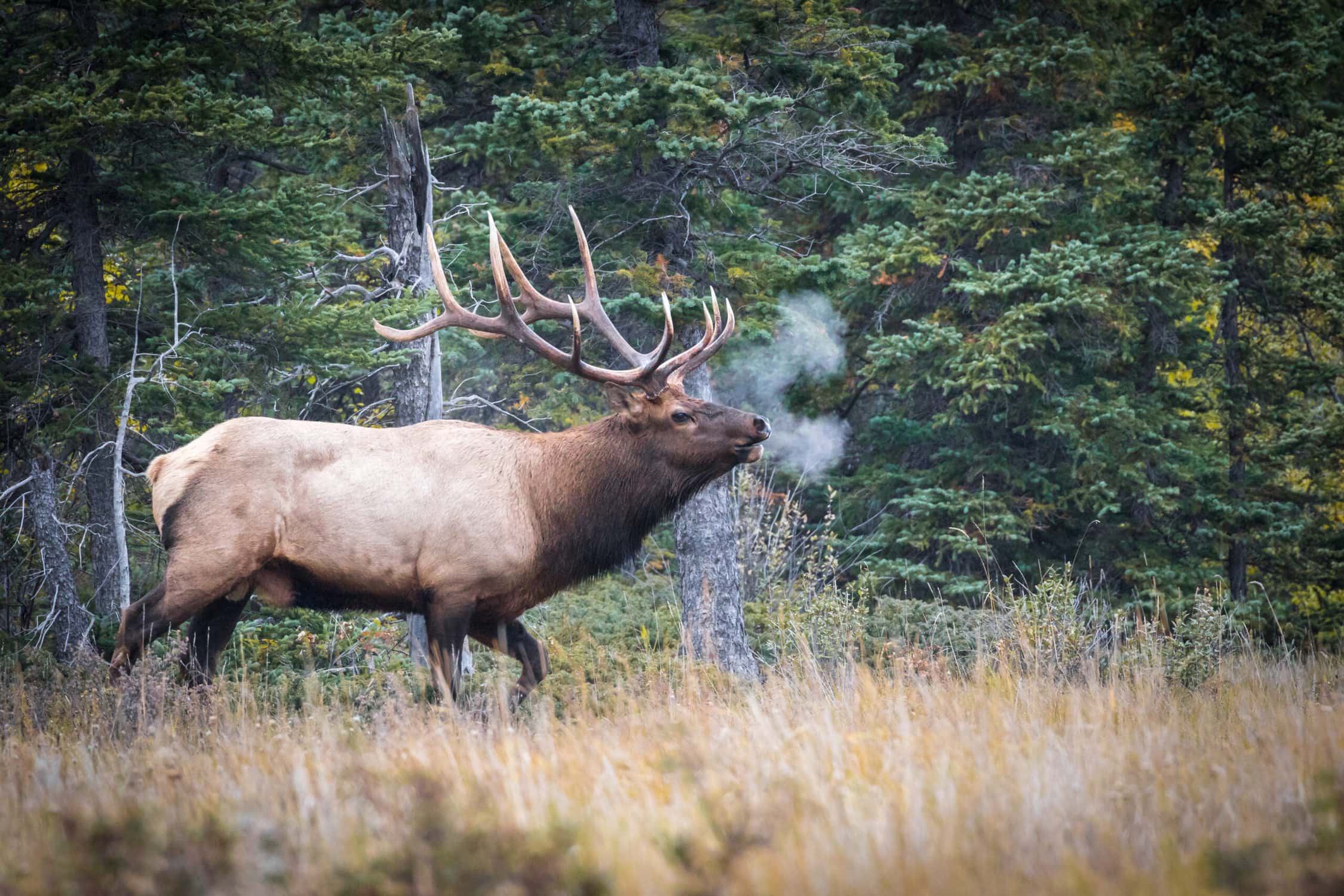
Elks are notoriously cunning and difficult to hunt. These animals are much larger than most other game animals and will take more skill and strength to hunt.
If you are looking to start hunting elk, this article will cover the basics, elk hunting gear, the where and when of elk hunting, and expert elk hunting tips to get you started.

For faster access to your most pressing questions, use our table of contents to get you there with one click.
Elk Hunting Basics
Experienced elk hunters often warn newbies about the suffering involved with elk hunting. This can include hunting in the scorching heat, freezing cold, or any weather in between. These things are part of any type of hunting but elk prefer to climb to high latitudes in the spring and into the icy tundras in the winter. They live deep in the woods so just getting into position will take a lot out of you.
You might think they are exaggerating but they are not. You have to be strong, fit, and prepared to put your body to the test when hunting elk. Let’s get started with the basics.
Types of Elks to Hunt in the U.S.
There are six species of elk in the United States but only three types are able to be hunted. The other three have gone extinct or are on the verge of extinction. This is why you must be sure to know the type you are allowed to hunt.


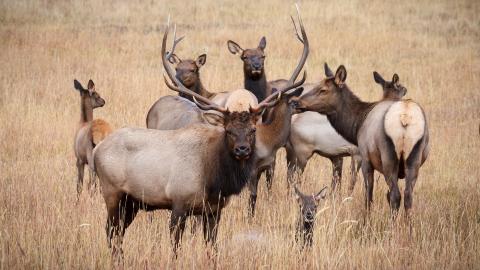
American Elk, A.K.A. Rocky Mountain Elk
These elks are native to areas west of the Mississippi and around 40 percent live in Colorado alone. The massive bulls can weigh up to 800 pounds while the females are closer to 500. Besides Colorado, you can find American Elk to hunt in Arizona, Montana, New Mexico, Idaho, and Wyoming. You can also find this species East of the Mississippi due to relocation and herd building efforts. Nine states in the eastern U.S. have sufficient numbers to allow hunting.
Roosevelt Elk
If you thought American Elk were big, meet their big brothers, the Roosevelt Elk. These are the largest of all elks. Although these are also found in the West, they prefer the Pacific Coastal habitats and are found in Washington, California, and are particularly fond of Oregon’s rainforest areas. The bulls weigh in at a whopping 1000 pounds and the females top the scales at a more modest 600 pounds.
Tule Elk
Tule elk are located only in California and are the smallest elk species in the U.S. The Tule bulls typically weigh roughly 600 pounds with the females coming in at 350-400 pounds. With populations in decline, it may be difficult to get a license to hunt this species in the near future.
As you can see, all species of elk are large. Be sure you have a plan on how to haul an 800-pound buck to your truck if you happen to be so lucky as to bag one.
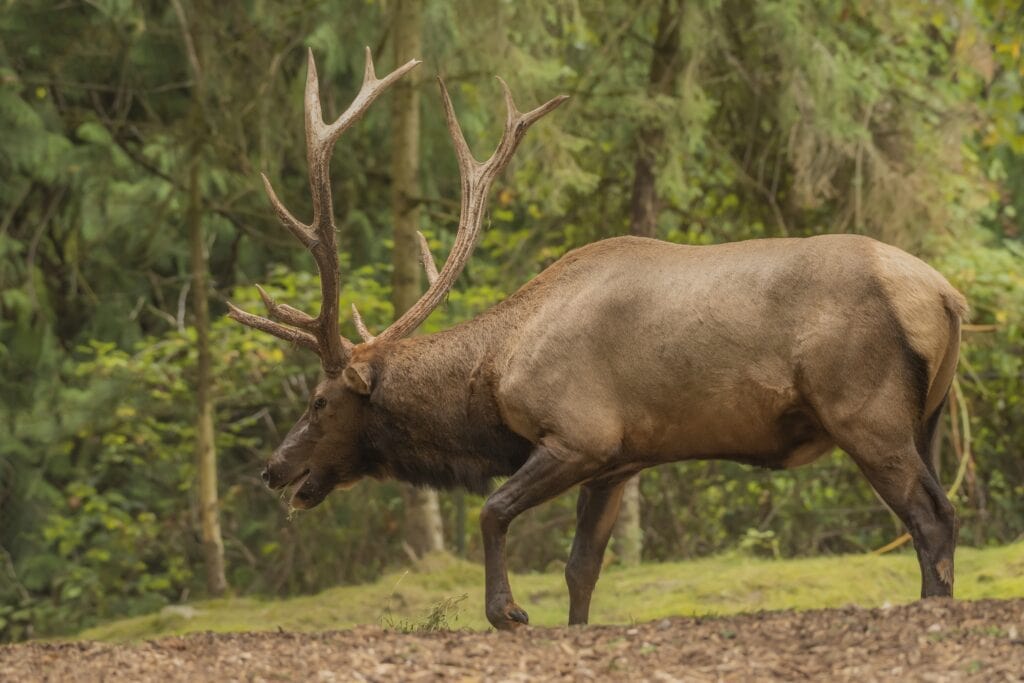
Top 9 States to Hunt Elks
Keep in mind that most elk hunting will be in the western United States, although there are states in the east that allow elk hunting. If you want to up your chances though, you should plan on heading west to places where these large game animals will be more concentrated.
Colorado
With the largest concentration of elk in the country, Colorado has no shortage of elk hunting opportunities. While most states draw hundreds of elk tags, Colorado draws thousands, increasing your odds greatly.The downside is, trophy bucks are rare in the state. If hunting elk is your goal, this is a great place to find success.
Arizona
Elk in Arizona tend to be the exact kind you want to hang on your wall. The problem however, is that it is difficult to get a tag. The state does a draw each year for elk hunting tags and it takes hunters an average of 7 tries to get pulled.
Montana
If you live in Montana, obtaining a license to hunt elk is simple and inexpensive. With plenty of elk roaming around, you’ll be set in no time. Non-residents pay quite a premium and are entered into a drawing. If you are wanting to apply to a few states to up your chances, Montana is a great place to add to your list.
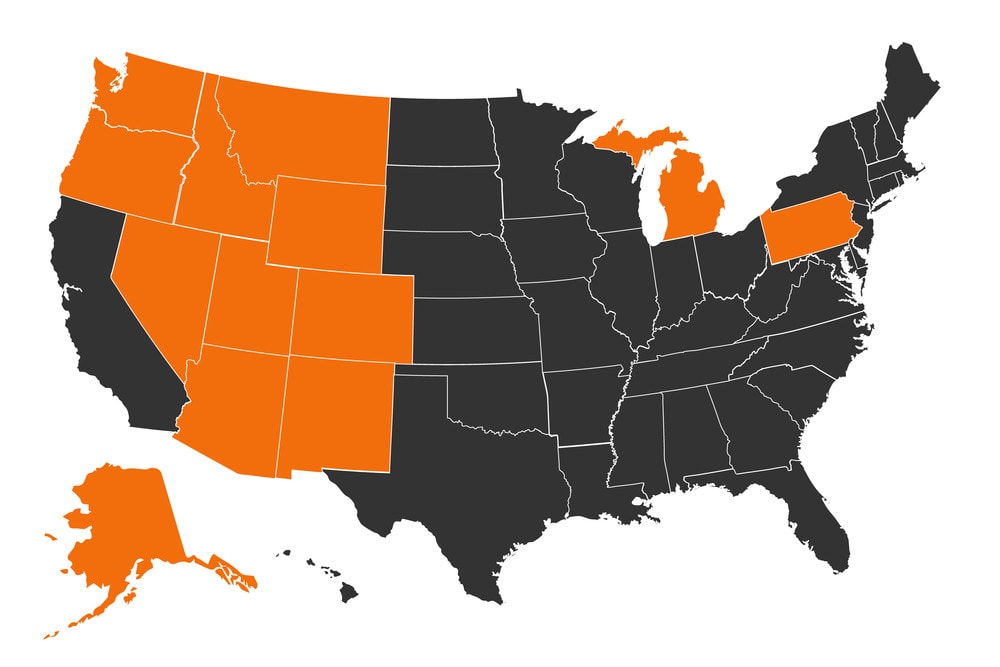
Wyoming
Wyoming varies between offering OTC licenses and only licenses to residents. It depends on the year. However, hunters in Wyoming have 34-40% success rates for bringing home a kill. There are a very small number of tags given out though to keep from overly thinning herds.
Washington
In Washington, elk herds are plentiful and you can obtain an OTC license easily. Licensing is per species and is limited to spikes (at least one antler that does not branch over the ears). Hunters are limited to one elk per season.
Idaho
Idaho currently limits the number of non-resident elk licenses being sold to a percentage of total licenses. However, these are on a first come first serve basis. So if you have the time and ability to be in the top spots, your chances are good. Trophy bulls are common but you must venture into heavily forested areas to get to them, so be ready to bring out the toughest gear you have.
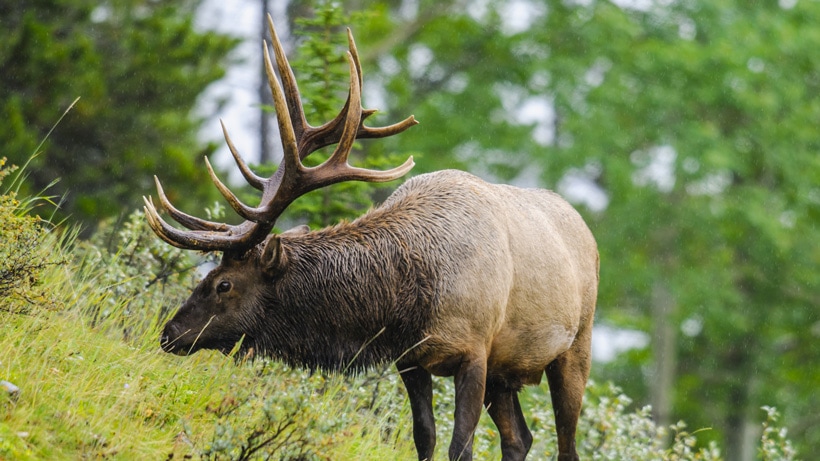
Pennsylvania
We had to be sure to put in at least one eastern state. For the best eastern United States elk hunting, Pennsylvania is your best bet. They also use a draw method but depending on your parameters (bull only, cow only, either sex, or antlerless) your chances are better than some western states. Pennsylvania grows large elk with antler ranges in the 350-400 inch range, EVERY YEAR. The best part is, the buy-in to the draw is so cheap you’ll never miss the money. It is less than $12 to put in your application.
New Mexico
If you’re looking for big bulls, New Mexico is the place to go. Your chance of getting tags is low but worth the opportunity if your name is drawn. Most areas are accessible and some regions are easier to get tags than others.
Oregon
Oregon offers both OTC and controlled hunt (draw) licenses for non-residents. While the elk population does not quite rival Colorado’s, the elk are still plentiful for the picking. The state offers both Roosevelt and American elk options. They also produce some big bulls each year.
Texas, Utah, and California are also great places to hunt elk for various reasons. Although hunting in the west is definitely more popular and plentiful, you can find places in the east as well. Just research the area you plan on going to and cross your fingers your tag is drawn.
When to Hunt Elk
Knowing when to hunt these massive creatures is essential to your success. Here are some things you should know about when to hunt elks.

Time of Year
Elk hunting season runs through the fall and winter seasons. Most western states run from August through January. Peak season generally runs from the beginning of fall through mid-October during the rut.
August and September are still fairly warm so most elk will be out and about for a few hours in the morning and a few hours in the evening.
Mid-late September through October is rut season and bulls will be actively in search of mates, traveling long distances to find the cows. This means the bulls are active throughout the day and this makes hunting all day a possibility.
From late October through the end of the season, food grows scarce and elks spend time hunting for any food they can find. Since the cold temperatures don’t bother them, they are active off and on all throughout the day. If you have the patience to wait, you’re likely to get some good opportunities.
Time of Day
Like most other animals, elk are most active in the early morning or late evening hours, so that is your best bet.
You can also find success in the midday but typically only during the rut. Although hunting elks in their safe space can scare them away and reduce your chances of them frequenting your location later in the day.
Weather
Elk are accustomed to very cold temperatures and will seek shelter during hotter weather conditions. While changing weather conditions are unlikely to affect elks, you need to be sure you are prepared when a storm hits or cold front moves in unexpectedly.

One thing to be cautious of is the winds. Elks have an enhanced sense of smell and when the wind is working against you, your chances are shot. Scent control does little to mask your smell with these creatures.
Get Your Gear Together
Hunting elks is somewhat different and somewhat the same as hunting most other game. Much of the equipment is similar but there are some variations and specifics to elk hunting gear. Regulations and rules are also different due to the lower population of elks compared to other animals.
Must-Have Elk Hunting Gear
When hunting elk, you have to be prepared for anything. These impressive animals can withstand very cold temperatures and venture into very high altitudes so preparation is key.
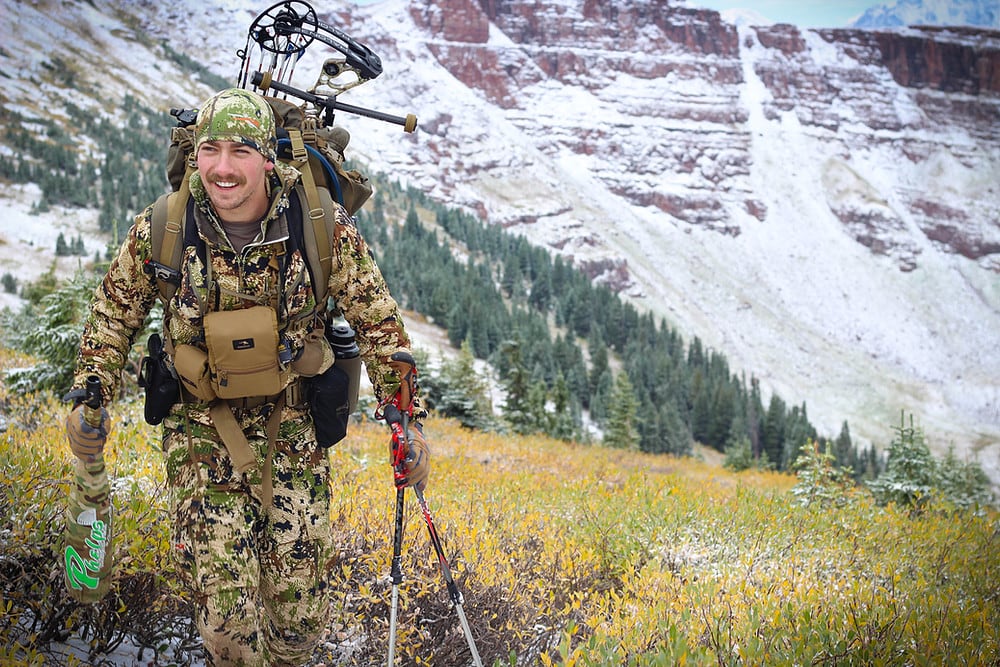
Boots
Your boots can make or break your elk hunt. After all, you’ll be on your feet for long periods, traipsing through the thickest brush and wooded areas, scaling mountains, and reaching elevations you may never have experienced. A good pair of boots is what will give you the comfort and traction necessary to track down that trophy bull.
Tip: Be sure to break in your boots well before you head out to hunt. Even a great pair of boots will cause blisters and discomfort if you wear them out on a hunt for the first time.
Clothing Layers
Weather is not a consideration for elks. They are unphased by dropping temperatures, storms, and winds. Therefore, you have to be prepared for the same. The best way to do this is to wear layers of clothing to hunt. You should have a base layer, a middle layer, and a top layer at a minimum. Be sure these are insulating and rugged so they won’t fail you when you’re miles from your truck.
Depending on the state regulations, you may also need to ensure you wear hunter orange or hunter pink when hunting. So be sure your bright-colored items fit over your layers without restricting your movement.
Elk Calls
If you are struggling to find a herd of elk, you can use a quality call or bugle to attract them to your area. Cow calls are good for attracting the bulls to your location.
Weapon and Ammo
Elks have very tough hides which require high-powered ammo to pierce. Be sure your shotgun or rifle is capable of handling loads sufficient for elk. Heavy shotguns or rifles firing 7mm or better and 155-200 grain rounds are recommended.
If you are bowhunting elk, you’ll need a draw weight of 50 pounds or higher. To ensure your shot is sufficient even if not perfectly placed, you’ll want over 400 grains for your arrows. If your draw weight and arrow speed are exceptionally high (over 300 FPS) you can go with a lighter grain but for average hunters, you’ll need a heavier weight arrow. For broadheads, it’s a toss-up between fixed and mechanical heads. The more important factor is how accurate you are with a broadhead type. Practice and train to figure out which combination of bow/arrow/broadhead brings you the most success and stick with them.
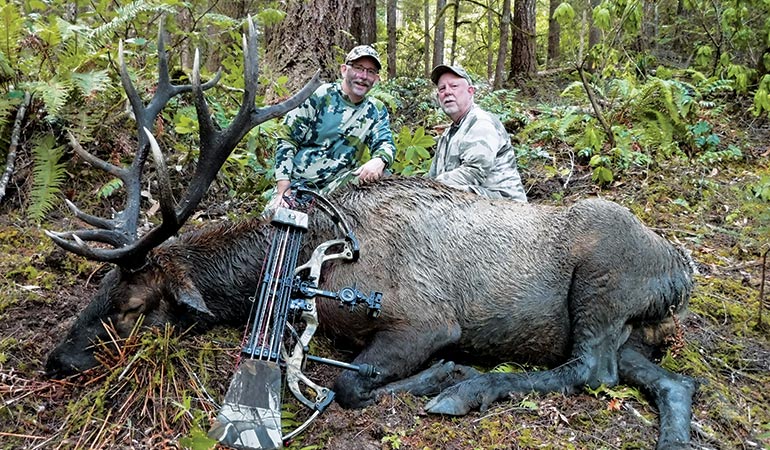
Binoculars
Elk are not likely to walk up to you. You will need to brave the weather, wilderness, distance, and altitude just to catch a glimpse. Having a good quality pair of binoculars will help you find the herd from a distance and better hone your strategy.
A few other supplies to consider are a head covering of some sort, good neoprene gloves, a light like a headlamp or flashlight for working in dimly-lit conditions, and something to carry your elks in. This can be a game bag or game strap.
Kill Kit/Game Bags
Ok, when hunting elks, you are looking for an animal that weighs between 300 to around 1000 pounds. This is not something you can sling over your shoulder and carry back to camp. After you kill an elk, you’ll need a way to harvest it and bring it back. A good kill kit, game bags, and a few buddies are your best bet.
In this should be gloves, some paracord, a knife, a saw, ground cloth, bags or pillowcases (you’ll need some waterproof bags and trash bags as well), and zip ties/duct tape, just in case.
Scent Eliminator
We already told you that scent eliminators are not very effective for elk due to their sensitivity to smell, however, reducing that smell is still beneficial. Even if an elk will smell you coming, you can close the distance before your presence is detected.
Of course, there are many other supplies that can make your hunt easier or more comfortable such as decoys, a scope, GPS, rangefinder, and trekking poles are nice additions but not required.
Elk Hunting Regulations
Each state has specific regulations when elk hunting. These can include the hunting season, the type of elk you can hunt, how many elks you can bag, required/restricted weapons, and more.
No matter where you’re hunting, you’ll need a hunting license and tags. With the exception of if you are hunting on private lands, then you will need a hunting license and permission.
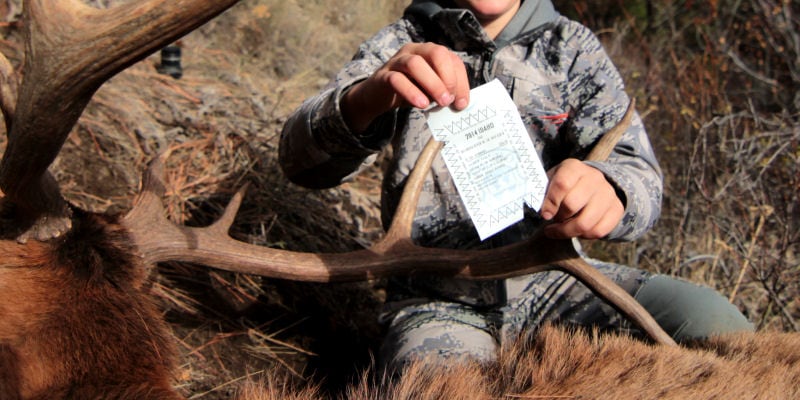
Preparing For the Hunt
As mentioned earlier, elk hunting is a physically demanding sport. This isn’t something you decide to do one day and head out the next. Here are some ways to prepare for an elk hunt.
Build Your Strength and Stamina
Your first step is to get into shape for elk hunting. Elks are very agile and climb to great heights and into the deepest woods. This will require you to be ready to follow them into these places which can mean many miles of tracking before you can actually get to the main event.
Hunting elks requires patience, preparation, and stamina. You may spend hours just tracking your quarry to a specific location. All that activity makes you prone to dehydration, exhaustion, fatigue, and other physical ailments. Tracking to high altitudes can cause acute mountain sickness (AMS) and headaches. AMS can cause vomiting and dizziness. Additionally, the air is also thinner the higher you go which can make it harder to breathe.
Take the time before your hunt to prepare your body physically. Stick to a training schedule for at least a month or two before your hunt. Make sure you are free from any risk factors that would prohibit you from being able to reach heights or tolerate cold temperatures. Cardio exercise is particularly good for preparing. Running early in the morning coupled with a gym or home exercise routine will help prepare your body for the task ahead.

Strength training is also essential. You will need quite a few supplies to carry with you and unlike deer hunting, you likely won’t set up in a single location and wait. Therefore, you will need to carry all those supplies wherever the elks travel. Elks are huge creatures and once you bag one, you’ll add the weight of the kill to your pack on the way back. This is very taxing on a body and can wear you out very quickly.
How To Use an Elk Call
Using an elk call will help draw animals to your location. But only if you do it right.
Choose Your Call
There are bull calls, cow calls, and diaphragm calls you can get for calling elk. The gold standard is a quality diaphragm call. With proper practice, you can make almost any sound an elk can by using this type of call. Another benefit of diaphragm calls is that they don’t require you to hold them. They sit inside your mouth, ready when you are.
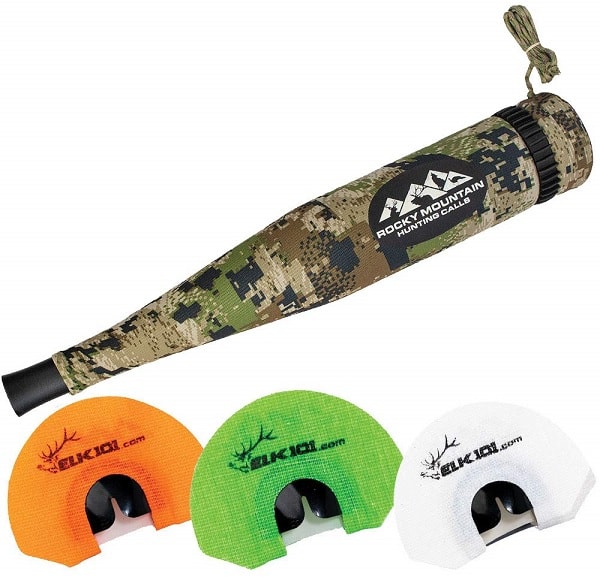
Consider the size, type, materials, latex configuration, and width. For a beginner, try a single reed, medium latex diaphragm call.
How To Create an Elk Sound
Don’t use too much air. The right call does not require gale-force winds to make the noise you desire. If you have to use excessive amounts of air, the latex on your call is likely too thick. This will make it impossible to hit both the low cow calls and higher bugles.
Use your tongue to control the sounds. By applying pressure with your tongue, you can change from a low call to a higher pitch.
Break down the individual sounds. Practice with a low note and slowly rise to a higher pitch for a few seconds before you drop back to the low note. This requires breath control. Then, apply slight pressure with your tongue. Gradually increase the pressure as you cycle through the “scale” of sounds.
Next, practice adding some of your own sounds from your throat into the call. Listen to what bugles and cow calls actually sound like and mimic them as closely as possible.
With enough practice, you’ll be able to replicate any elk sound you hear to lure your prey in. Here is a video to help you with the process.
Types of Hunts
There are mainly three types of hunts you can choose. Here is a short description of each.
Self-Guided
This is where you do all the work. You scout, you cook, you track. Bring a few buddies but the brunt of the work falls on each of you to make decisions. These have a very low rate of success.
Guided Hunt
This is where an experienced hunter who lives in the area takes you out. They already know the patterns of the elk in the area, where the watering holes are, and where your best opportunities are. They plan the day, will schedule breaks, and often provide meals and drinks. The success rate of these is around 70%.
Semi-Guided
In a semi-guided hunt, you will be taken to a location with high elk activity and given instruction and direction. Your guide may provide you with a map and usually have nearby camps and may offer meals.
However, in this type, your guide does not remain with you and you are responsible for tracking area elk. These types of hunts prove to be successful around 50% of the time.
Choose the best type for your specific experience and budget level to get the most out of your hunt.
Elk Hunting Tips
Hunting elk is unlike any other creature. If you’re an experienced hunter, that’s great but you’ll still need to keep a few things in mind.
Tips For a Successful Hunt
Here are expert tips for elk hunting to make your hunt more productive. Remember that less than 30 percent of elk hunters bring home a kill in a given year. Due to the lower population of elk, the difficulty of hunting these beasts, and the competitive nature of hunting, bagging an elk is a challenging prospect.
Study Patterns and Scout
Know the season when you are hunting so you know what to expect. In warmer temps, elk will venture out in search of food early in the morning and in the cool of evening. The rest of the day, they will seek shelter and not be active. During this time of year, they will prefer eating grasses and forbs. They will also frequent watering holes after eating.
In the winter, elks migrate to areas where they will find food. This is usually tree bark, twigs, and grass, basically, whatever they can find. If there’s snow, tracking becomes a bit easier. However, elk are rarely ever cold. They are built for cold temperatures and can withstand down to -20 degrees without any significant behavioral changes. Lower than that, the elks will begin to increase activity to keep warm. However, few hunters can handle this type of cold for any length of time.
Elks can also travel for up to 40 miles without stopping to forage for food, so don’t think this will be an easier time to hunt.

Know The Laws and Regulations
Be sure you know the rules of the location where you are hunting. Also, know exactly what your tags say. Some tags are only for certain sizes or types of elk, like cows or spikes. You can be heavily fined for bagging anything but what is listed, so be sure you know what you are allowed to hunt.
Hit the Right Spot
Due to their sheer size, it is extremely difficult to take an elk down with one shot. Some hunters shoot an elk up to 8 times. Even a fatally wounded elk will usually take some time to go down. So be ready to track the animal until it finally stops moving.
One of the best shots is a lung shot. Elks require an enormous amount of air and even a small lung wound can be fatal. Boiler room shots (in the shoulder) are popular because the elks can’t continue forever with a broken shoulder.
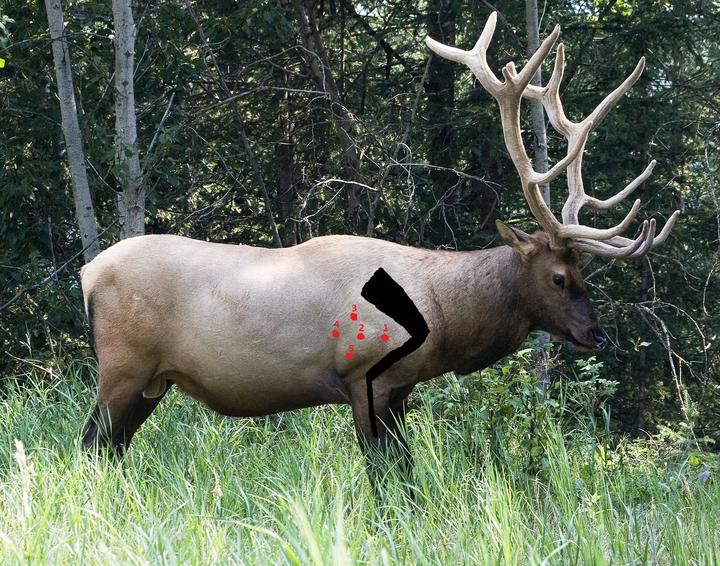
Wherever you hit it, be sure it won’t simply wound the animal and cause it to run without killing it. You also don’t want to cause unnecessary suffering. This is unethical and cruel. You also want to avoid damaging places you intend to harvest meat from.
Be Ready to Run
After a shot, your target will take off and you will have to follow. You will need to run to keep the distance minimized between you and your elk to keep from losing it into deep woods. Sometimes you will not have a blood trail to follow.
There are also times when you will run after an elk you drew in and then suddenly it balked. If it’s close enough, don’t be afraid to actively pursue your target.
Have a Plan For After The Kill
It’s all fun until you have a 500 pound elk laying in front of you and you have no idea what to do with it. Decide before you go whether you will haul your kill back or celebrate over a bonfire. Having friends to help quarter and haul is a good idea. Be sure you have the right supplies to take care of your kill.
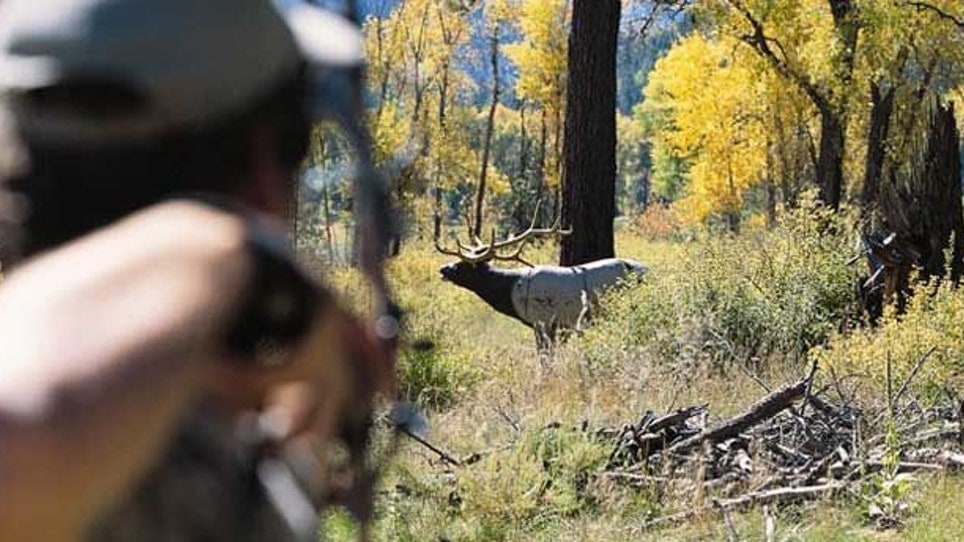
Conclusion
If you have the stamina and patience for elk hunting, you are sure to enjoy the hunt. Take your time getting ready and scouting to give you the best chance at bagging an elk. Besides, getting a tag can take several seasons or applying to various states.
Every step in the process is an exercise in patience and determination but don’t be discouraged. Just realize it will likely take time to get your first elk. Hunting with a guide is going to produce the highest chance of success but if you feel ready to take it on yourself, go for it. Happy hunting!

Big Game Logic is a participant in the Amazon Services LLC Associates Program, an affiliate advertising program designed to provide a means for us to earn fees by linking to Amazon.com and affiliated sites. Pages on this site may include affiliate links to Amazon and its affiliate sites on which the owner of this website will make a referral commission
